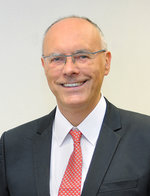Prof. Dr. Paolo Giubellino
2017 – 2024
Since January 2017 Paolo Giubellino is Scientific Managing Director of GSI Helmholtzzentrum für Schwerionenforschung GmbH (GSI Helmholtz Centre for Heavy Ion Research) and the Facility for Antiproton and Ion Research in Europe GmbH (FAIR GmbH). Research focus of Paolo Giubellino is the physics of high-energy heavy ion collisions and the matter produced in them. After studying at Turin University and the University of California in Santa Cruz, he took part in many heavy-ion experiments at the European Organization for Nuclear Research CERN in Switzerland. Since the early 1990s, he has held several senior positions at CERN’s ALICE experiment. In 2011 Giubellino was appointed Spokesperson of ALICE. He has also worked at the Torino section of the Italian National Institute for Nuclear Physics (Istituto Nazionale di Fisica Nucleare, INFN) since 1985. For his work he has received numerous awards. Among other things, he received the Lise Meitner Prize of the European Physical Society in 2014 as well as the Enrico Fermi Prize, the highest award bestowed by the Italian Physical Society (2013). In 2012 the Italian president awarded him the title of "Commendatore della Repubblica Italiana" for his scientific achievements. In 2016 he was elected into the Academia Europaea.
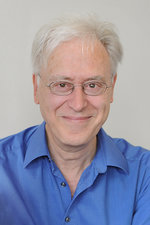
Professor Dr. Karlheinz Langanke
2015-2016 (ad interim)
Karlheinz Langanke was born on 13th February 1951 in Bockum-Hövel. He studied physics at the University of Münster and obtained his doctorate in 1980. After a postdoc position at the California Institute of Technology (Caltech) he was professor at the University of Munster from 1987 to 1992. In 1992 he became a member of the Faculty at Caltech as Senior Research Associate with Steven Koonin. In 1996 he accepted a chair at the University of Aarhus in Denmark. Since 2005 he is professor for theoretical physics at Technische Universität Darmstadt and senior fellow at GSI. From 2006 until 2015 he was Research Director of GSI. His research focuses on theoretical calculations of nuclear reactions in supernovae and stellar element synthesis. For his scientific work Langanke was awarded among others with the Lise Meitner Prize by the European Physical Society in 2012 and with the Benjamin Lee Professorship Award by the Asian Pacific Center for Theoretical Physics in 2015. He was elected into the Academia Europaea and was appointed honorary member of the Hellenic Nuclear Physics Society. Langanke was and is member of numerous significant scientific committees in Europe, America, and Japan.
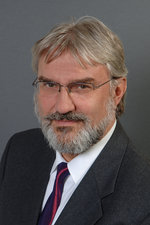
Professor Dr. Dr. h.c. mult. Horst Stöcker
2007-2015
Horst Stöcker was Scientific Director of GSI from 2007 until 2015. He was born in Frankfurt, Germany, and studied physics, chemistry, mathematics, philosophy and theology at the Goethe University Frankfurt. After his PhD in 1979 he worked as a guest scientist at GSI and joined the Lawrence Berkeley National Laboratory of the University of California, as a NATO fellow of the German Academic Exchange Service. He taught as an assistant professor at the Michigan State University and did research at the National Superconducting Cyclotron Laboratory, Michigan, USA, from 1982 to 1985, before he accepted a professorship for theoretical physics at the Goethe University in 1985. Since 2004 he holds the Judah M. Eisenberg professorship. He was vice president of the Goethe University as well as of the Helmholtz Association. Besides he was founding member of the board of directors of the Frankfurt Institute for Advanced Studies (FIAS). His studies involve relativistic heavy ion and elementary particle physics as well as their impact on the physics of supernovae, neutron stars and black holes. He is one of the 200 most-cited scientists worldwide. (Status 2015)
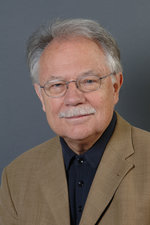
Professor Dr. Walter F. Henning
1999-2007
Walter F. Henning, born in 1939, studied physics in Darmstadt and Munich. In 1968 he received his PhD with a thesis in nuclear physics at the TU München. From 1969 to 1976 he worked as a scientific assistant in the department of physics at TU München. During this time he finished his habilitation thesis in nuclear physics. From 1973 to 1975 he joined the Argonne National Laboratory, Illinois, USA, as a visiting scientist and from 1977 to 1986 he worked there as staff physicist. From 1983 he taught as professor at the University of Chicago, until he accepted a professorship at the University of Mainz in 1986. Parallely he started working as division head at GSI, Darmstadt. In 1992 he became the director for the physics division at Argonne National Laboratory.
From 1999 to 2007 he came back to Gemany, joining GSI as Scientific Director and University Frankfurt as professor. The main topic of his studies were nuclear reactions and the structure of atomic nuclei.
2007 he relocated to Argonne National Laboratory. (Status 2007)
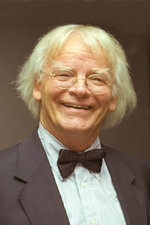
Professor Dr. Hans Joachim Specht †
1992-1999
Hans J. Specht, born in 1936, studied physics in Munich and Zurich.
After he finished his PhD 1964 in Munich he worked at AECL, Canada, for a short period of time, before he returned to work at TU Munich for several years.
In 1973 he accepted a professorship in experimental physics at the University of Heidelberg. Primarily he set the main focus of his research on atomic and nuclear physics; in 1982 he changed his interests to high-energy heavy-ion physics and spent several research stays at CERN in Geneva, Switzerland.
From 1992 to 1999 he was Scientific Director of GSI in Darmstadt. In 2000 he joined the Heidelberg Academy of Sciences and Humanities. He retired in 2004.
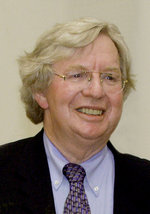
Professor Dr. Paul Kienle †
1984-1992
Paul Kienle, born 1931 in Viernheim, died 2013 in Munich. He studied Technical Physics at the Technical University of Munich (later TU). After completing his doctorate in 1957, he worked as a PhD at Brookhaven National Laboratory. From 1959 to 1963 he worked as an assistant at the TH Munich. In 1963, he was appointed to the Chair of Radiation and Nuclear Physics at the Technical University of Darmstadt. From 1965 he was Professor of Experimental Physics at the Technical University of Munich. From 1984 to 1992 Paul Kienle was Scientific Director of GSI. He then returned to Munich, where he continued his work in the fields of hadron physics, nuclear structure and atomic physics and accelerator physics.
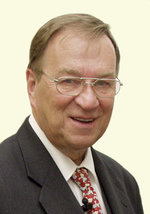
Professor Dr. Gisbert zu Putlitz
1978-1983
Gisbert zu Putlitz was born in Rostock in 1931 and studied physics in Heidelberg. After obtaining his doctorate in 1962 and habilitation in 1966 at the University of Heidelberg, he spent several years doing research in the USA, Switzerland and Great Britain. In 1973 he became professor in Heidelberg. From 1978 to 1983 he was Scientific Director of GSI. At the same time, from 1981 to 1983 he was Chairman of the Association of National Research Centres, now the Helmholtz Association. From 1983 to 1987 he was Rector of the University of Heidelberg. From 2000 to 2003, zu Putlitz was President of the Heidelberg Academy of Sciences. From 1986 to 2008, he was CEO of the Gottlieb Daimler and Karl Benz Foundation.
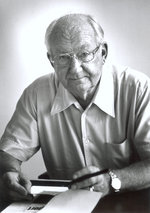
Professor Dr. Christoph Schmelzer †
1971-1978
Carl Christoph Schmelzer is one of the founding fathers of GSI. Born 1908 in Lichtentanne in Saxony, died 2001 in Heidelberg. Schmelzer studied physics in Jena. His doctorate in 1935 was followed by a research stay at Brown University in Providence, Rhode Island, USA, from 1936 to 1939. From 1939 to 1948 he was an assistant at the Technical Physical Institute of the University of Jena. In 1948 he moved to the University of Heidelberg where he worked on the development of particle accelerators. In 1959 Schmelzer was appointed to the Chair of Applied Physics by the University of Heidelberg. From 1969 to 1978 Schmelzer was the first Scientific Director of GSI. Under his leadership, UNILAC was planned and built. Schmelzer was a member of the Heidelberg Academy of Sciences, received numerous awards for his outstanding contributions to accelerator physics and was awarded the Federal Cross of Merit in 1978.




